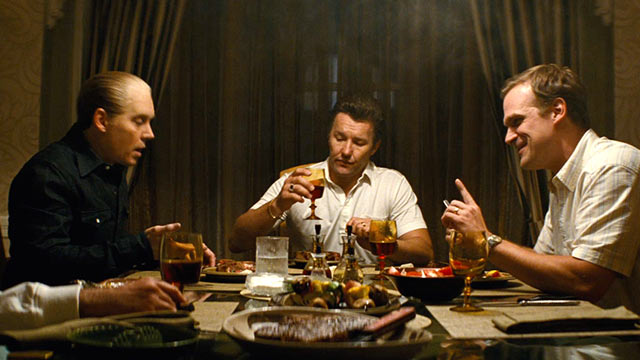Susanne Collins’ book series and its subsequent film adaptations “The Hunger Games” has lead the pack of young-adult dystopian fiction. As an outside observer and
a non-reader of the source-material, my familiarity of the films' well-worn
pulp and science-fiction tropes combined with the overall seriousness in which
they are presented has often left me cold. As the series has progressed both in
budget and quality and as the story shifted from the hokey set-up of booby
trapped game shows—hokey in execution, not necessarily concept—to the
devastation of a revolutionary war scenario, my patience has increased in terms
of the films’ undeniable tween demo targeting.
“The
Hunger Games: Mockingjay Part 2” concludes this franchise with an emotional and
visceral payoff for those who have been invested since the first page of the
first novel. It’s by far the darkest of the four movies and challenges “Harry
Potter and the Deathly Hollows Part 2” with its mounting body count. But unlike
many of the films in this series that awkwardly juxtaposed its themes of
violence with its interest in filling the multiplex with 13 year old girls,
this installment is fully committed to the trauma and complex psychological
torture involved with oppression and war.
Katniss
Everdeen (Jennifer Lawrence) has decided to break out on her own, away from the
safety net of the other rebels and away from the propaganda war perpetrated by
the rebel leader Alma Coin (Julianne Moore). With a little help getting out of
her city district, Katniss and a group of other young soldier attempt to travel
across the war-torn Capital to assassinate President Snow (Donald
Sutherland). On their journey they must
avoid a series of dangerous booby-traps—less hokey this time around—while
staying under the radar of the Capitals extensive surveillance.
After
spending much of the last film brain-washed by the leaders of the evil
government, Peeta Mellark (Josh Hutcherson) has rejoined the rebels, now suffering
from post-traumatic stress. The rest of the group, including Katniss’ other
would-be suitor Gale (Liam Hemsworth), are skeptical of Peeta’s reintegration
and Katniss’ loyalties are once again divided. By this point in the series,
amongst all of the death and destruction at hand, the last thing I want to see
is the further development of a love triangle. Though much of it is truncated
in favor of the film’s more interesting arc about the exchange of one
governmental dominion to another, whenever the movie pauses to pay lip-service
to this sub-Twilight will-they-or-wont-they, the tragedy of war is momentarily trivialized.
Besides
the tonally inappropriate love-story, the majority of the movie has a shocking
lack of levity. The stakes are as high as anything the series as presented thus
far and director Francis Lawrence flavors the rebel’s deadly pursuit with
almost horror-movie levels of tension and anxiety. In one particularly
suspenseful scene, Katniss’ group are held up in a subway tunnel where they are
attacked by subterranean mutant vampire-like creatures. There’s not a lot of
blood-letting or gore in this sequence but the set-up and its cinematic effect
adds up to some pretty scary stuff for a younger than teenage audience. It also
happens to be the only moment in which Lawrence seems to be havin fun with the pulpier elements of this franchise.
“Mockingjay
Part 2” makes interesting points about the way classism and war exploits those
most vulnerable, doing most of the heavy lifting for the privileged outliers who only
wish to propel their own ideologies. The film’s final act—minus a saccharin and
pointless epilogue—includes a shocking political gesture and a bravely messy cap
on the good-guys-verses-bad-guys nature of the story. It’s about 25 minutes too
long, drags whenever the characters have talk to each other, and cannot be
bothered to consider its existence as a piece of genre entertainment, but as
the full maturation of a YA property, this final installment is smart enough
and intense enough to warrant the lesser entrees that preceded it.
Grade:
B-
Originally published in the Idaho State Journal/Nov-2015
Listen to more discussion about "Mockingjay Pt.2" and "Carol" on this week's Jabber and the Drone podcast.
Listen to more discussion about "Mockingjay Pt.2" and "Carol" on this week's Jabber and the Drone podcast.






